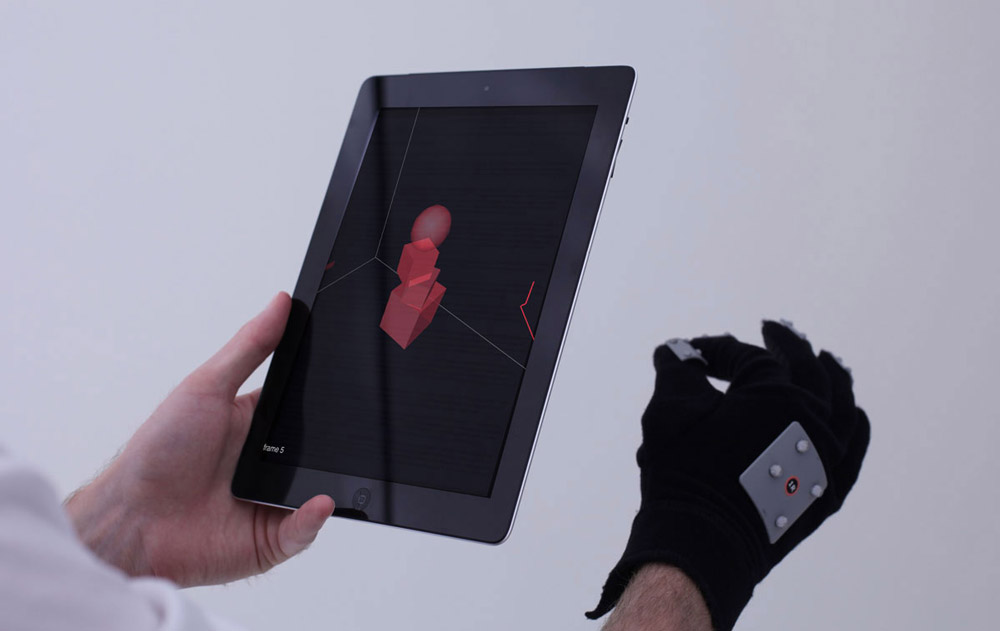MIT Glove Lets Wearers Move Virtual Objects

A world of pinching and grabbing virtual objects in the air still seems more like "Minority Report" than reality, but MIT's Tether glove may help usher in such futuristic interfaces. Glove wearers can make gestures to create or move around 3D objects in a shared virtual space viewed through handheld tablet screens.
That hands-on approach for a shared virtual workspace came out of MIT's Tangible Media Group. An MIT video shows how people can use either the motion-tracked glove or a multitouch tablet screen to draw spirals, create cubes and spheres, and work together to arrange virtual objects in patterns such as ascending or descending lines.
"The system allows input through capacitive touch on the display and a motion-tracked glove," according to the MIT website. "When placed behind the display, the user’s hand extends into the virtual world, enabling the user to interact with objects directly."
One video example shows a person drawing spirals on a tablet screen and moving the tablet backward to create a 3D spiraling shape in the virtual workspace. That translates a familiar 2D gesture on a common consumer device into 3D results.
Another case shows how glove wearers can use pinching gestures between the thumb and various fingers to grab and move around virtual objects, or even stretch the corners of a virtual cube — a wire frame box appears around the objects being highlighted. Quickly touching together two fingers can also make certain objects appear or disappear.
MIT's system allows people to work together on the same virtual space while standing side by side, but it can also supposedly work with remote human partners. Still, the concept is more of an impressive tech demo than a gadget ready to hit the market anytime soon — it relies upon five Vicon cameras to track the glove and head motions of human users.
This story was provided by InnovationNewsDaily, a sister site to LiveScience. You can follow InnovationNewsDaily on Twitter @News_Innovation, or on Facebook.
Get the world’s most fascinating discoveries delivered straight to your inbox.




